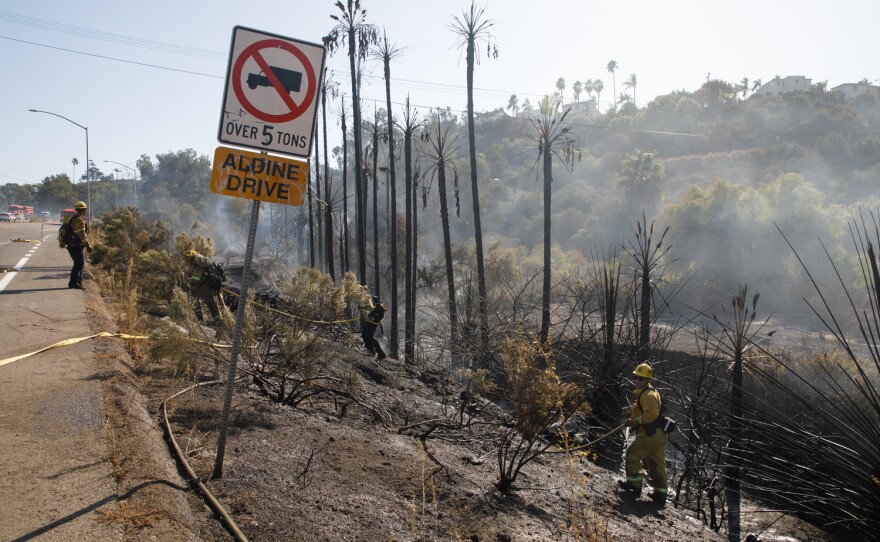San Diego is behind on removing brush from city property, putting land with a high chance of catching fire at risk, according to a roughly 40-page internal audit released last week.
The report from City Auditor Andy Hanau’s office also found that officials have failed to maintain improvements on problems flagged more than a decade ago, when internal auditors first made recommendations on the agency’s brush abatement policies.
With a “siloed approach” and no comprehensive list of land subject to brush management regulations, San Diego lacks a citywide program that has left some departments fulfilling their duties better than others, the report said.
Auditors warned that the city’s “inconsistent and potentially ineffective” efforts persist even as climate change, drought conditions and a buildup of dry vegetation have increased wildfire frequency and intensity.
“To mitigate these impacts, there is a pressing need for effective wildfire prevention and minimization strategies that combine increased wildfire resistance and comprehensive brush management,“ the audit said.
City crews are responsible for thinning and pruning vegetation on more than 3,000 acres — three times the size of Balboa Park — of what’s known as “Very High Fire Hazard Severity Zones.” That’s the state’s highest classification for fire risk, based on criteria such as high winds, slopes and other factors.
Nearly two-thirds of that city land is managed by Parks and Recreation’s Open Space Division. But while auditors found the Open Space Division’s $4.7 million annual program was sufficiently operating, it was the only department reviewed under the audit that ensured regular brush management. Others were relying on “reactive” efforts, the report said.
The city’s Transportation Department, for example, conducts brush management based on service requests and fire complaints. Auditors said despite recent efforts, land within the department’s purview “likely has gone unaddressed.”
Did you know?
Both state law and the city code generally require private property owners to manage brush within 100 feet of their structures that are located in a Very High Fire Hazard Severity Zone. This perimeter is called “defensible space,” which can help firefighters control blazes when they occur. Local agencies are responsible for managing brush beyond the defensible space. To report brush and weed issues in the city of San Diego, call 619-533-4444
The report also flagged Fire-Rescue practices: Though the department is responsible for enforcing state and local fire codes and preventing and mitigating fires, it “does not proactively monitor or inspect” city-owned land to ensure compliance with brush management rules.
Auditors found better practices in other fire departments across California, saying Santa Barbara and Oakland have adopted more proactive wildfire mitigation, such as identifying and prioritizing fire risk lands, assessing brush management effectiveness and publicly reporting its mitigation progress.
San Diego does none of these, the report said.
The city has experienced some of the largest wildfires in California’s history, including the 2003 Cedar Fire, which claimed 15 lives and destroyed 2,820 structures countywide, and the 2007 Witch Creek and Guejito fires, in which two people died and 1,650 structures were lost.

This year’s heavy rainfall, especially, has grown more fuel for fire, and auditors suggest increasing brush management funding would be more cost-effective in comparison to how much is spent on an actual fire and the aftermath.
Eric Dargan, the city’s chief operating officer, told auditors that he agrees with the findings and that staff already is working on improvements. Officials are pursuing grant opportunities to help support brush management, working to create and refine maps, considering more staff for the city’s Open Space Division and creating new positions — wildland mitigation specialists — that would help oversee brush management, he said.
Dargan will also be directing departments to ask for more resources, such as funding from the city’s budget, beginning as early as this fiscal year.








